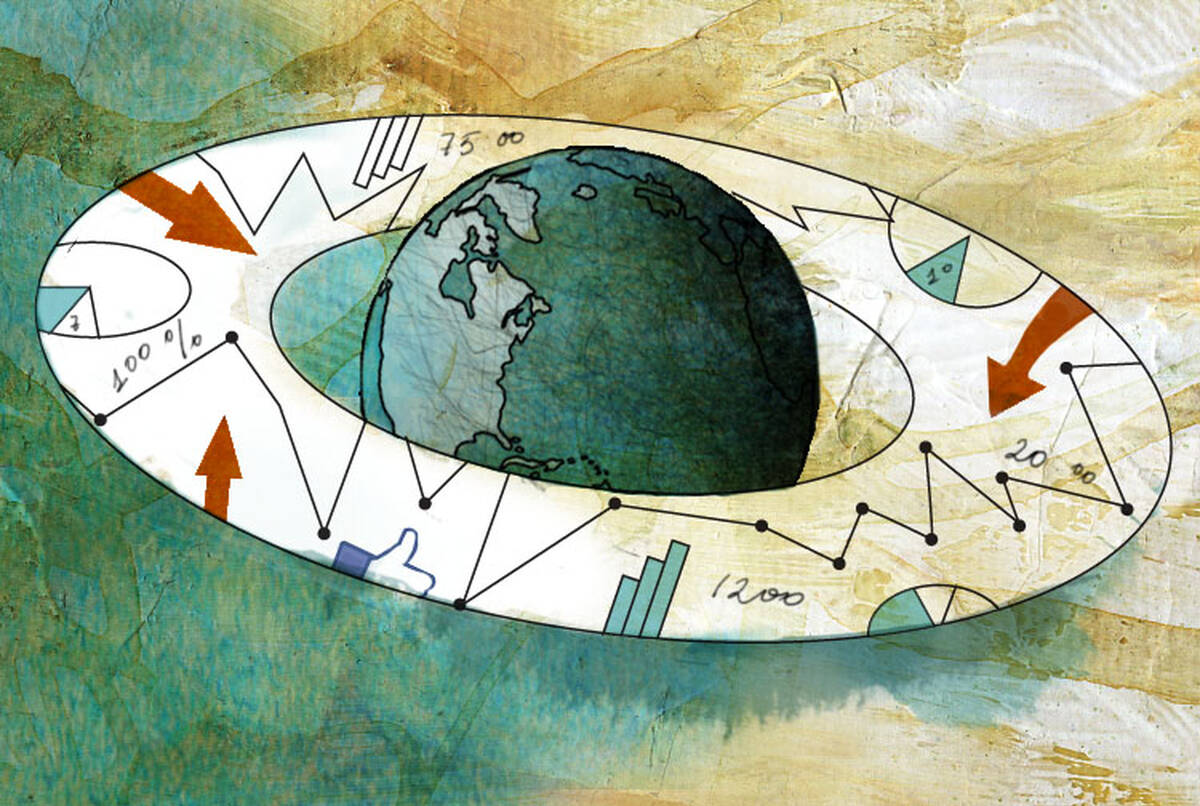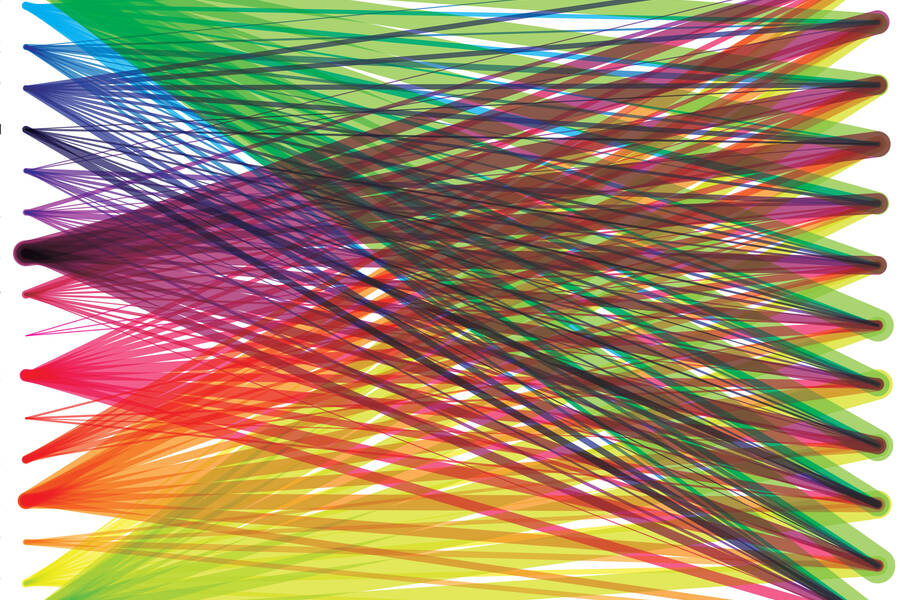The emerging field of computational social science takes advantage of the proliferation of data being collected to access extremely large data sets for study. The patterns and trends in individual and group behavior that emerge from these studies provide “first facts,” or universal information derived from comprehensive data rather than samples.
“Computational social science is an irritant that can create new scientific pearls of wisdom, changing how science is done,” says Brian Uzzi, a professor of management and organizations at the Kellogg School. In the past, scientists have relied primarily on lab research and observational research to establish causality and create descriptions of relationships. “People who do lab studies are preoccupied with knowing causality,” Uzzi says. “Computational work says, “I know that when you see X, you see Y, and the reason why that happens may be less important than knowing that virtually every time you see X, you also see Y.”
“Big data goes hand in hand with computational work that allows you to derive those first facts,” Uzzi says. “Instead of trying to figure out how scientists come up with great ideas by looking at 1,000 scientists, you look at 12,000,000 scientists—potentially everyone on the planet. When you find a relationship there, you know it’s universal. That universality is the new fact on which science is being built.”
Computation in the Social Sphere
Studying large data sets for first facts about human behavior has led to striking advances in recent years. Uzzi notes how one particular data set—mobile-phone data—“has taught us very distinctively about human mobility and its implications for economical and social stratification in society.” It has also shed light on how people behave during evacuations and emergency situations, including infectious-disease outbreaks. Knowing how behaviors affect the spread of diseases can help public health officials design programs to limit contagion.
The ability to track the social behavior of large groups has also shifted people’s understanding of human agency. “Until recently, we really believed that each of us made our decisions on our own,” Uzzi says. “Our friends may have influenced us here or there but not in a big way.” But troves of social-media data have shown that people are incredibly sensitive and responsive to what other people do. “That’s often the thing that drives our behavior, rather than our own individual interests or desires or preferences.”
This may change how you think about your consumer behavior, your exercise regimen, or what you Tweet about. Researchers like Uzzi are also deeply interested in how this responsiveness influences political behavior on larger issues like global climate change or investments in education systems. Think of it as a shift from envisioning yourself as a ruggedly individual, purely rational, economic person to a sociological person who encounters and engages and decides in concert with others.
One aspect of computational social science—brain science—has already discovered that those decisions are often being made before we even know it. “Brain science has taught us a lot about how the brain reacts to stimuli,” Uzzi says. With the visual part of your brain moving at roughly 8,000 times the speed of the rest of your brain, the visual cortex has already begun processing information—and leaping to certain conclusions—before the rest of your brain ever catches up. And with 40 percent of the brain’s function devoted strictly to visualization, “if you want to get in front of anything that’s going to lead to a decision, an act of persuasion, an in-depth engagement with an idea, it has got to be visual.”
“The really big things are understanding how something diffuses through a population and how opinions change,” Uzzi says. “If you put those two things together, you really have an understanding of mass behavior.”
This increased understanding of both mass and individual behavior presents huge opportunities for businesses, notably in the health sphere. “There is going to be an entirely new ecology of business that goes beyond how we think about health today,” Uzzi says. “For many people, there is no upper threshold on what they will pay for good health and beauty. With health increasingly decentralized to the individual, that’s going to spin off to companies that want to take advantage of this information to help people do things better.”
Scaling from One to Everyone
While gathering data on groups as large as the entire population is beneficial to scientists, marketers, and the like, computational social science has the scalability to allow for practical data generation on an individual level as well. This means that you can be the subject of your own data-rich computational study, without control groups or comparison testing. “You actually generate enough data on yourself, every day, that could be collected, that you can be the subject of a computational study,” Uzzi says.
Developments in the ability to collect and parse data on individuals is one area where computational social science has the potential to transform people’s lives—from providing more information about individuals’ own health to raising their awareness of unconscious biases to showing how their decision-making processes are influenced by others. “It’s going to allow people to personally use data that can help them improve their lives in a way that they never imagined before,” Uzzi says.
For example, using wearable technologies allows for sensor data collection that can include emotional activation and heart-rate monitoring in social interactions, caloric intake, biorhythms, and nervous energy. The crunching of that raw data into actionable information will happen through our machines. If you think you have a close connection to your smartphone and your tablet now, wait until you rely on it to tell you how much that last workout helped—or did not help—you shake off the tension of a long day at the office.
“Our closest partnership in the world is probably going to be our machine that helps us manage all this,” Uzzi says. This can be transformative by making us healthier.
It may make us less discriminatory, too. We all have cognitive biases that lead us to make irrational decisions. These are thought to be hard-wired things we can identify but not necessarily change on our own. Sensor data can provide a feedback loop of how we have acted in the past. This has the potential to improve future decision making. If your sensors pick up signals that show your body acting differently around certain groups, perhaps in ways that you suppress or to which you are oblivious, that may be harder to ignore.
“Our own sense of identity could be greatly shaken by this, or improved, or both.”

